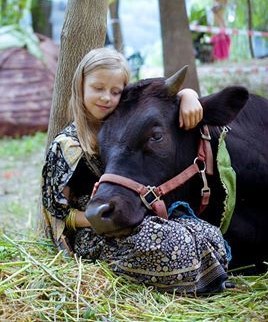In a publication titled Recipe for a Livable Planet: Achieving Net Zero Emissions in the Agrifood System1, the World Bank lays bare the unacceptable cost of meat-eating on the earth. The bank also suggests that Western/developed/high-income countries should move away from completely meat-based food to a vegetarian diet or vegan diet. The report has been authored by 3 researchers with excellent credentials. Would this report bring about any policy changes in the Western world? That would be a dream and not a reality. The biggest surprise though is the fact that the agrifood systems emissions have been undercounted for a long time and now we know the truth.
Let’s look at this report and see what the World Bank report says.
Acknowledgment that the agrifood system has a big climate problem: This report, like all previous reports on this topic, has blamed the developing / middle-income / low-income countries as culprits while developed countries are gorging themselves on red meat. The report also confirms that the conditions are in place to start the agrifood system’s transformation to net zero. At least, the authors pointed out that developed countries can do much to reduce emissions.
No country comes out clean, but all countries have a chance to contribute: The developed countries, the middle-income countries, and the low-income countries, each have a different pathway to continue on their development path while curbing emissions. This report makes the excellent suggestion of fully pricing animal-source foods, which are being subsidized now, mostly by the developed countries.
Setting the path to net zero emissions: This report also discusses the six-step path to net zero emissions with investments, incentives, information, innovation, institutions, and inclusion. For decades the developed countries have recommended an unsustainable and needlessly high level of proteins as absolutely required for humans. This is at a time when humans are engaging less and less in physical labor and have to go to gyms to lose pounds.
For the last few decades, we have seen the food pyramid of all the developed countries and how this is being copied by middle-income and low-income countries. The food pyramid has given high importance to meat-based nutrition. Meat companies pushing meat as a better food option have already created an increase in demand for all types of meat. At such a time, this report recommends vegetarianism as a solution to curbing emissions. That’s the big story in this report.
Sutton, William R., Alexander Lotsch, and Ashesh Prasann. 2024. Recipe
for a Livable Planet: Achieving Net Zero Emissions in the Agrifood System. Agriculture and Food Series. Conference
Edition. World Bank, Washington, DC. License: Creative Commons Attribution CC BY 3.0 IGO
India is home to the world’s largest population of vegetarians. Estimates vary but generally the estimates fall between 30 and 42 % of about 1.4 billion people are vegetarians. According to the Hindu religious scriptures, Kamadhenu the half cow, half human fulfills righteous requests for resources. Further, one of the fundamental principles of Hinduism is ahimsa (non-violence). So, the cow is sacred for both vegetarians and most non-vegetarians. That’s the reason for the low per capita consumption of beef in India.
One of the charges that has been thrown at India repeatedly is that the large population of cows contributes significantly to global warming due to their methane emission. India has always had a very large bovine population, as Indian farming depends on animal power for all small farmers. Majority of meat eaters in India do not eat beef. So, the size of the bovine population is not due to unsustainable practices like growth hormones, excessive administration of antibiotics, feeding the cows with unnatural foods like corn and keeping the cows in feedlots in extremely unhygienic conditions. The growth in the bovine population is due to natural breeding.
What does the report say about meat eating?
High income countries (HIC) have high per capita consumption of agrifood including meat. They also account for very large emissions related to food processing, packaging, transport, storage, distribution and waste both at the retail point as well as at the consumption point. So, the report points out that the HICs should decrease their own consumption of emissions intensive animal source foods. This can be achieved by adding societal costs like environmental and health costs to the food prices.
Low and middle income countries (LIC and MIC) need help to bring in more efficiency to their agrifood process and reduce emissions. This can be achieved only if the HICs provide more financial and technical support to the LICs and MICs.
The HICs have a disproportionate share of emissions from agrifood. The countries comprising the voiOrganisation for Economic Co-operation and Development (OECD), with population of close to 1.4 billion with a very high per capita consumption of agrifoods and emissions, have a significant impact on the earth far outpacing the impact by the rest of the seven plus billion people. This report points out in passing that the per capita emissions of the citizens of the HICs is the highest. The HICs are also the highest per capita consumers of red meat like beef. The authors suggest shifting subsidies from beef and dairy to lower emission foods like poultry, fruits and vegetables. This is where the Kamadhenu will be spared. According to a research article published by Gidon Eshel, Alon Shepon, Tamar Makov, and Ron Milo, beef requires 28 times more land, six times more fertilizer and 11 times more water compared to other food sources. That adds up to about five times more greenhouse gas emissions. Any reduction in red meat leads to far more impact on the total emissions irrespective of whether the country is HIC, MIC or LIC. So, in effect the World Bank says spare the cow and save the earth. The researchers also say the animal-based portion of the US diet uses ≈0.6 million km2 for crops and processed roughage, equivalent to ≈40% of all US cropland or ≈2,000 m2 per person.
Agrifood emissions and the emitters
46 percent of agrifood system emissions in HICs come from pre- and post-production processes. For comparison, 35 percent of agrifood system emissions in MICs and only 6 percent in LICs come from these processes. The pre and post-production processes include emissions that arise from agrifood waste disposal, household consumption, retail, processing, transport, energy consumption of farms, packaging etc. Since the thinly populated HICs use more automation and process food more, the emissions from these processes is far in excess of the LICs and MICs.
This figure shows that emissions reduction can be achieved broadly in 3 ways. This figure shows only 5 countries from the report. However, the report includes all countries. First is that Brazil, China and the United States can reduce the demand for meat. This includes industrial scale meat production. Second is that Brazil, China, the US and India can sequester carbon from agriculture besides reducing emissions. Third is that Brazil, Indonesia and the US can protect, manage, and restore forests and other ecosystems. Other countries are lesser offenders and no one is off the hook.
In summary, the writing on the wall is clear. To urgently address climate change, reducing and eliminating eating red meat will be one of the biggest contributors. The area required for growing feed for the animals, grazing lands, soil pollution due to the waste from industrial dairy and beef farming are costs that are way too high for the world and it is time the beefeaters wake up to the reality. The majority of the people in the world are being held to ransom by the beef eaters, as the rest of the people are either vegetarians or cannot afford to buy enough meat. Reduction in red meat consumption should be a monitored factor towards corporate and national ESG goals.
This article has used information published in:
World Bank report authored by Sutton, William R., Alexander Lotsche, and Ashesh Prasann. For the complete report please click here.
Land, irrigation water, greenhouse gas, and reactive nitrogen burdens of meat, eggs, and dairy production in the United States by Gidon Eshel, Alon Shepon, Tamar Makov, and Ron Milo. For the complete report please click here.

